Are you fascinated by the beauty and diversity of birds? Have you ever wondered how you can start birdwatching and become a skilled birder? Birdwatching, also known as birding, is a beloved hobby that allows you to connect with nature and observe the incredible world of birds. Whether you’re a beginner or have some experience, this article will provide you with essential birdwatching basics to get started on your birding journey.
Step Outside and Explore Your Backyard
One of the easiest and most enjoyable ways to begin your birdwatching journey is by venturing right outside your doorstep. Your own backyard can be a haven for a wide variety of bird species, providing you with countless opportunities to observe and appreciate these beautiful creatures up close.
To attract birds to your backyard, consider setting up bird feeders filled with birdseed. This will entice different species to visit regularly, allowing you to observe their behaviors and characteristics. Additionally, providing a water source, such as a birdbath, will not only quench the birds’ thirst but also give them a spot to freshen up and take a quick dip.
By simply stepping outside and paying attention to the birds that visit your backyard, you’ll have the opportunity to familiarize yourself with different species and witness their unique traits and patterns. The convenience of birdwatching from home makes it a great way to fit this hobby into your daily routine.
“My backyard has become a sanctuary for birds of all kinds. It’s amazing to watch them flit around, feed, and interact with one another. I’ve even been able to identify several different species just by spending time in my own backyard.” – Sarah M., avid backyard birder
Creating a Welcoming Backyard Habitat
Transforming your backyard into a bird-friendly habitat involves more than just setting up feeders and a birdbath. By considering the specific needs of different bird species, you can create an environment that attracts a wide range of feathered visitors.
Here are a few tips to make your backyard a haven for birds:
| Tip | Description |
|---|---|
| Plant native vegetation | Choose plants, shrubs, and trees that are native to your area, as they provide familiar food sources and nesting sites for local bird species. |
| Vary the feeders | Offer a variety of bird feeders with different types of seeds, suet, or nectar to attract a diverse range of bird species with varying dietary preferences. |
| Create shelter | Provide natural cover, such as bushes or evergreen trees, where birds can seek shelter from harsh weather conditions and potential predators. |
With a little effort and consideration, you can turn your backyard into a thriving birdwatching hotspot that invites a multitude of fascinating bird species.
Get a Bird Guide or Birding App
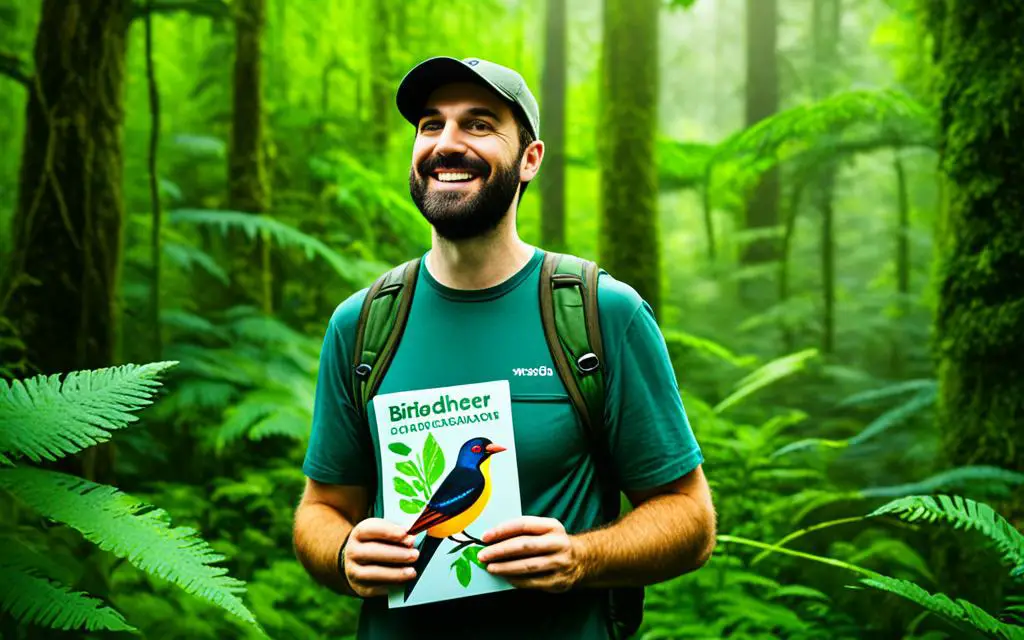
When it comes to identifying the birds you encounter during your birdwatching adventures, having a reliable bird identification guide or a birding app is essential. These tools provide you with valuable information and features that can help you accurately identify different bird species.
A comprehensive bird identification guide, such as “National Geographic’s Complete Birds of North America,” is a fantastic resource for both beginner and experienced birders. With detailed descriptions, illustrations, and range maps, this field guide covers a wide range of bird species that you may come across during your birdwatching excursions.
“A bird identification guide like National Geographic’s Complete Birds of North America is like having an expert birder with you at all times. It’s an invaluable resource that helps you identify birds with confidence.”
Alternatively, you can use birding apps, like “Merlin” created by the Cornell Lab of Ornithology, to instantly identify birds right from your smartphone. These apps use advanced algorithms and extensive databases to analyze your observations and provide you with accurate bird species identification in seconds.
“Birding apps like Merlin by the Cornell Lab of Ornithology are incredibly handy tools for birdwatchers on the go. They make bird identification easy and accessible, so you can focus on enjoying your birding experience.”
Whether you prefer a traditional field guide or the convenience of a birding app, having these resources at your fingertips will greatly enhance your birdwatching outings and enable you to discover and learn about the amazing variety of bird species you encounter along the way.
Invest in Binoculars
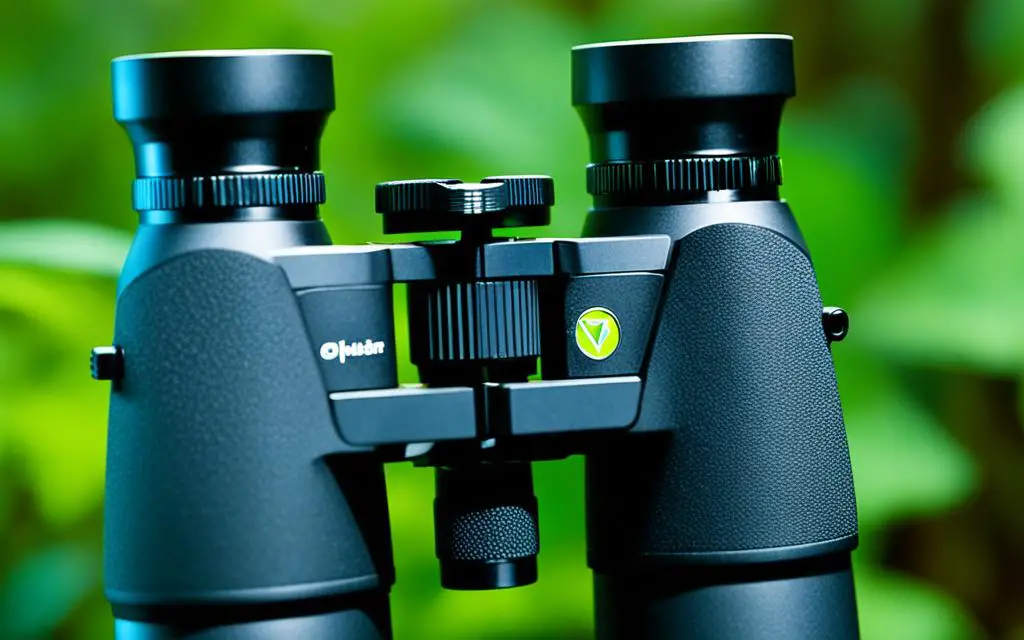
While not necessary, binoculars greatly enhance the birdwatching experience by allowing you to see birds in greater detail. Look for binoculars in the $100 to $200 range that offer good optics and a lifetime waterproof warranty. It’s best to visit a store and try out different pairs to find one that suits your comfort and needs. Remember to choose binoculars with appropriate magnification and weight for easy use in the field.
Binoculars are essential tools for any birdwatcher. They bring distant birds up close, allowing you to observe their plumage, behavior, and unique features. Whether you’re a beginner or an experienced birder, investing in a pair of high-quality binoculars will greatly enhance your birdwatching adventures. Here are some tips to help you select the right binoculars for birding:
1. Optics and Warranty: Look for binoculars with good optics that provide a clear and sharp image. A lifetime waterproof warranty ensures that your binoculars are protected from the elements.
2. Price Range: Binoculars can range in price from as low as $50 to as high as several thousand dollars. Aim for a mid-range price point of $100 to $200, as this will provide good optics without breaking the bank.
3. Comfort and Fit: Visit a store and try out different binoculars to find the ones that feel comfortable in your hands and provide a clear view. Consider the weight and size of the binoculars, as you’ll be carrying them for prolonged periods in the field.
4. Magnification: Choose binoculars with an appropriate magnification for birdwatching. A magnification of 8x or 10x is ideal for most birding situations. Higher magnification can result in a narrower field of view and may lead to image instability.
5. Extras and Accessories: Some binoculars come with additional features such as built-in image stabilization or range finders. Consider whether these extras are necessary for your birdwatching needs.
6. User Reviews: Read reviews from other birdwatchers to get an idea of the performance and durability of different binocular models. Online forums and birdwatching communities are great places to find reliable user reviews.
Remember, choosing the right binoculars for birding is a personal decision. What works for one person may not work for another. Take your time, do your research, and find a pair of binoculars that fits your budget and preferences. With the right binoculars in hand, you’ll be ready to embark on a birdwatching adventure and discover the beauty of the avian world.
Explore Different Birding Locations

To expand your birdwatching experience, it’s important to venture beyond your backyard and explore different birding locations. By visiting various habitats, such as parks, nature reserves, and even urban areas, you can observe a diverse range of bird species and witness their unique behaviors.
Different bird species have specific habitat preferences, ranging from tall trees to shrubs and open fields. By exploring these different environments, you’ll have the opportunity to spot a wide variety of birds that inhabit each specific habitat.
Local parks and nature reserves are excellent places to start your exploration. These protected areas are often rich in birdlife, offering an abundance of species to observe. Within these green spaces, you’ll find different habitats that attract various bird species, creating an ideal birdwatching experience.
Urban areas can also surprise you with their birding potential. City parks act as small pockets of nature amidst the concrete, providing shelter and food sources for birds. Pay attention to the bird-friendly features, such as trees, shrubs, and water sources, found in urban parks, as they attract both resident and migratory bird species.
“Birds are the most accomplished aeronauts the world has ever seen. They fly high and low, at great speeds, and very slowly. And always with extraordinary precision and control.” – David Attenborough
Example of Birdwatching Locations Table:
| Location | Habitat | Diversity of Bird Species |
|---|---|---|
| Central Park, New York City | Park with woodlands, meadows, and lakes | Over 275 bird species |
| Everglades National Park, Florida | Wetlands, mangrove forests, and sawgrass prairies | Over 360 bird species |
| Rocky Mountain National Park, Colorado | Alpine tundra, coniferous forests, and meadows | Over 260 bird species |
| Golden Gate Park, San Francisco | Park with gardens, ponds, and coastal scrub | Over 200 bird species |
Exploring different birding locations allows you to broaden your birdwatching knowledge and appreciate the incredible diversity of bird species found in different habitats. So grab your binoculars, pack your field guide, and embark on exciting birdwatching adventures in a variety of locations!
Connect With Local Birding Groups

Joining a local birding group or birding club can be an excellent way to immerse yourself in the birdwatching community and enhance your birding experience. By connecting with local birders and birding communities, you can gain valuable insights, expand your knowledge, and engage in exciting birding events.
Local birding groups offer a supportive environment where experienced birders are often more than willing to share their expertise and help you identify birds in your area. They can provide valuable information on local birding hotspots, migration patterns, and rare sightings. By interacting with fellow birdwatchers, you’ll have access to a wealth of knowledge and guidance that can profoundly enrich your birding journeys.
Moreover, birding clubs frequently organize various birding events, walks, and workshops that cater to birdwatchers of all levels. These events provide excellent opportunities to meet other birdwatching enthusiasts who share your passion for birds. You can learn from experienced birders during guided walks or participate in themed workshops focused on specific bird species or habitats.
By participating in local birding club activities, you can discover new insights, learn advanced birdwatching techniques, and build lasting connections in the birding community. The camaraderie and shared experiences will further fuel your love for birdwatching and inspire you to explore new horizons.
“Being a part of a local birding group has allowed me to learn from experienced birders, explore unique birding locations, and form lifelong friendships with fellow birdwatchers.” – Anna Richardson, avid birder
Benefits of Connecting with Local Birding Groups:
| Benefits | Explanation |
|---|---|
| Knowledge Sharing | Learn from experienced birders and gain insights into local bird species, habitats, and migration patterns. |
| Bird Identification Assistance | Get help identifying birds in your area and refine your bird identification skills. |
| Birding Events and Workshops | Participate in guided birding walks, workshops, and events organized by local birding groups. |
| Community and Friendship | Connect with like-minded birdwatchers, share experiences, and build long-lasting friendships. |
Whether you are a beginner or an experienced birder, joining a local birding group can significantly enhance your birdwatching adventures. The shared passion for birds and the supportive community of local birders will make your birding journeys more enjoyable and rewarding. So don’t hesitate to connect with birding clubs and immerse yourself in the vibrant world of birdwatching!
Embrace Early Mornings for Birdwatching

Birds are most active in the early morning, making it the perfect time for birdwatching. When the sun rises and paints the sky with vibrant colors, the world of birds awakens with energy and song. This is the time when you can witness the dawn chorus, a delightful symphony of bird songs that fills the air. As you venture out at sunrise, you’ll be greeted by a cacophony of melodies as birds sing to establish territories, attract mates, and communicate with each other. It’s a magical experience that every birdwatcher should embrace.
During the early morning, birds are hungry and actively forage for food. It’s a time when they are most visible and actively engaged in their morning routines. By seizing this opportunity to observe them in action, you’ll have a better chance of spotting and identifying different bird species. The soft morning light creates optimal conditions for viewing their vibrant feathers and distinct features, enhancing your birdwatching experience.
To fully enjoy your early morning birdwatching sessions, start your day with a cup of coffee and a donut. The caffeine will give you a much-needed boost of energy, while the sweet treat provides a delightful indulgence. Savor the combination of flavors as you immerse yourself in the peaceful serenade of bird songs. It’s a moment to connect with nature and appreciate the beauty of the avian world around you.
So set your alarm, grab your binoculars, and venture out at the crack of dawn to witness the spectacular morning bird activity. Experience the symphony of bird songs, observe their energetic behavior, and have memorable encounters with these feathered creatures. The early morning hours hold a special allure for birdwatchers, offering a glimpse into a world that often goes unnoticed. Start your day with the magic of the dawn chorus and embrace the joy of morning birdwatching.
Learn the Basics of Bird Identification
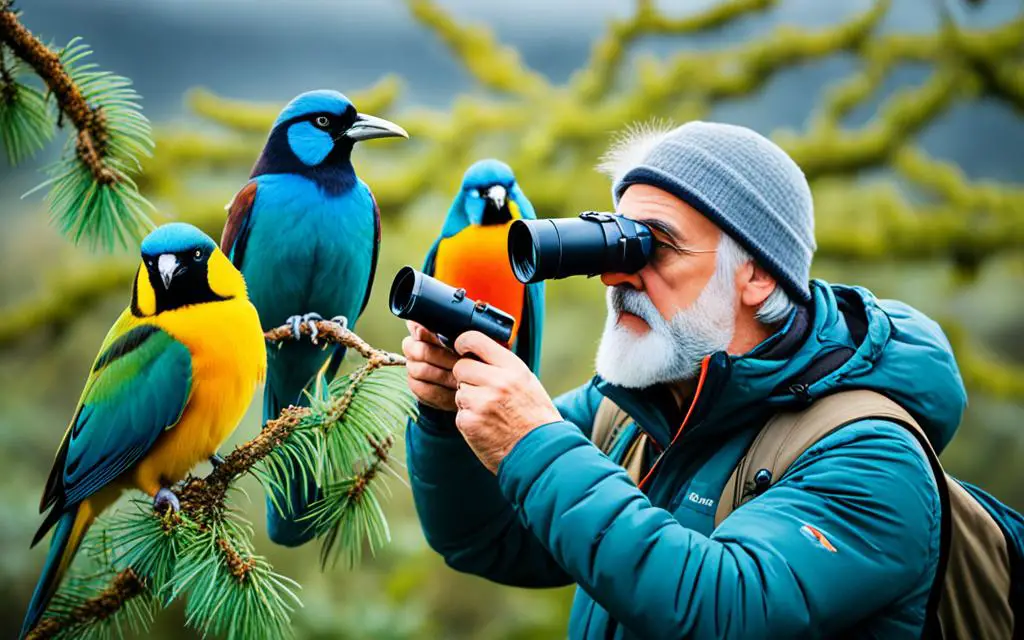
Familiarize yourself with the essential techniques for identifying and recognizing different bird species. By understanding bird identification, you can confidently recognize and appreciate the diversity of birds you encounter during your birdwatching adventures.
“The key to successful bird identification lies in paying attention to field marks, such as plumage patterns, beak shape, and bird size. These visual characteristics provide important clues that help differentiate one species from another.”
Field Marks
Field marks are distinct characteristics unique to different bird species that can be observed in the field, enabling accurate identification. These marks include:
| Field Mark | Description |
|---|---|
| Plumage Patterns | The arrangement and patterns of colors on a bird’s feathers. |
| Beak Shape | The size, shape, and structure of a bird’s beak. |
| Bird Size | Comparison of a bird’s size relative to other known species. |
By carefully noting these field marks and comparing them to known species, you can significantly narrow down the possibilities and identify the bird accurately.
Bird Behavior and Habitat Preferences
Bird identification involves more than just visual observations. Pay attention to bird behavior and habitat preferences. Different bird species exhibit specific behaviors and preferences for particular habitats. For example, some birds prefer open grasslands, while others thrive in dense forests. Observing the behavior and preferred habitats of birds can provide crucial hints for identification.
Note Taking and Sketching
Develop the habit of taking notes during your birdwatching outings. Jot down important details such as the bird’s size, coloration, beak shape, plumage patterns, and any unique behaviors observed. This information will serve as a reference when identifying the bird later. Additionally, sketching key features of the bird can help solidify your observations and improve your ability to recognize species in the future.
Bird Songs and Calls
While visual field marks are crucial for bird identification, bird songs and calls can also be powerful tools. Each bird species has unique vocalizations, allowing you to identify them even when they are not visible. Learning to recognize bird songs and calls will greatly enhance your ability to identify bird species in various habitats and situations.
By incorporating these bird identification techniques into your birdwatching practice, you’ll become a skilled birder capable of confidently recognizing and appreciating the remarkable diversity of bird species.
Practice Birdwatching Etiquette
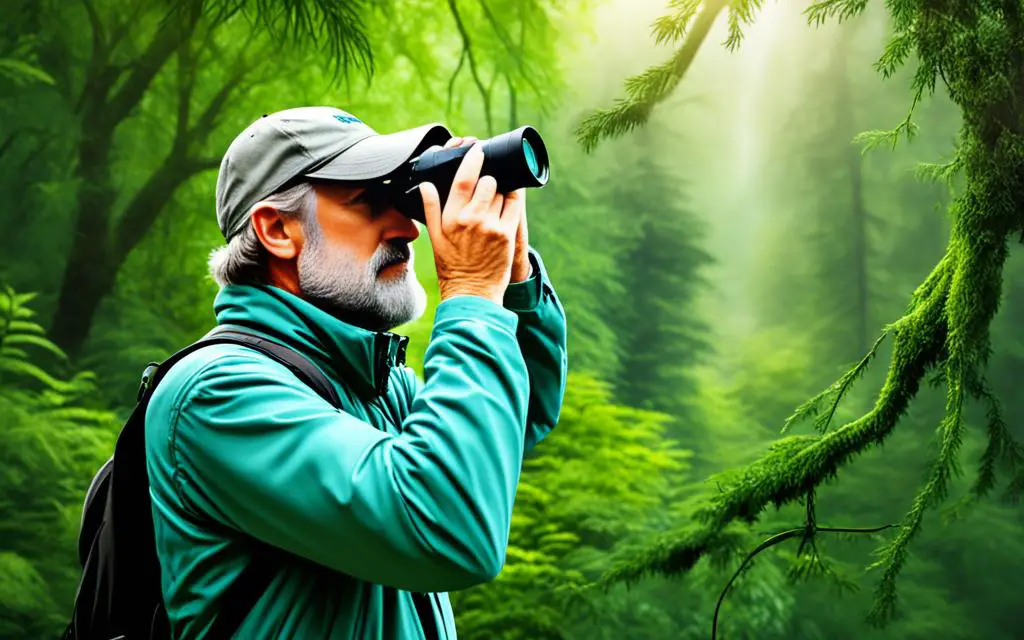
When engaging in the wonderful activity of birdwatching, it is essential to adhere to birdwatching ethics and practice proper etiquette to ensure minimal disturbance to birds and their habitats. By respecting these guidelines, we can create a positive and sustainable birdwatching experience for both the birds and ourselves.
Respecting Birds and Their Space
Respecting birds and their personal space is of utmost importance. While it can be tempting to get up close for a better look, it is crucial to maintain a respectful distance to avoid disturbing their natural behavior. Observing birds from a distance allows them to feel safe and comfortable, ensuring they carry on with their daily activities undisturbed. Remember, they are wild creatures and should be given the space they need to thrive.
Avoiding Disturbances
Avoiding loud noises and sudden movements is essential in minimizing disturbances during birdwatching. Sudden noises or movements can startle birds, causing them unnecessary stress and interrupting their behavior. Move quietly and slowly, taking caution not to startle or alarm the birds you are observing. By being mindful of our actions and keeping disturbances to a minimum, we can peacefully coexist with these magnificent creatures.
Following Park Rules and Regulations
Following park rules and regulations is crucial for the well-being of birds and their habitats. National parks, nature reserves, and other protected areas have specific guidelines in place to ensure the preservation of the environment and the wildlife within it. Always stay on designated trails, respect protected areas, and avoid disturbing nesting sites or sensitive habitats. These rules are put in place to protect the birds and their ecosystems, so it is important to adhere to them and set a positive example for others.
| Practice | Guidelines |
|---|---|
| 1. | Respect birds’ space and maintain a respectful distance. |
| 2. | Avoid sudden movements and loud noises. |
| 3. | Follow park rules and regulations. |
By practicing these birdwatching ethics and guidelines, we can enjoy the beauty of birds while minimizing our impact and preserving their natural habitats for future generations of birdwatchers to come.
Expand Your Knowledge and Skills
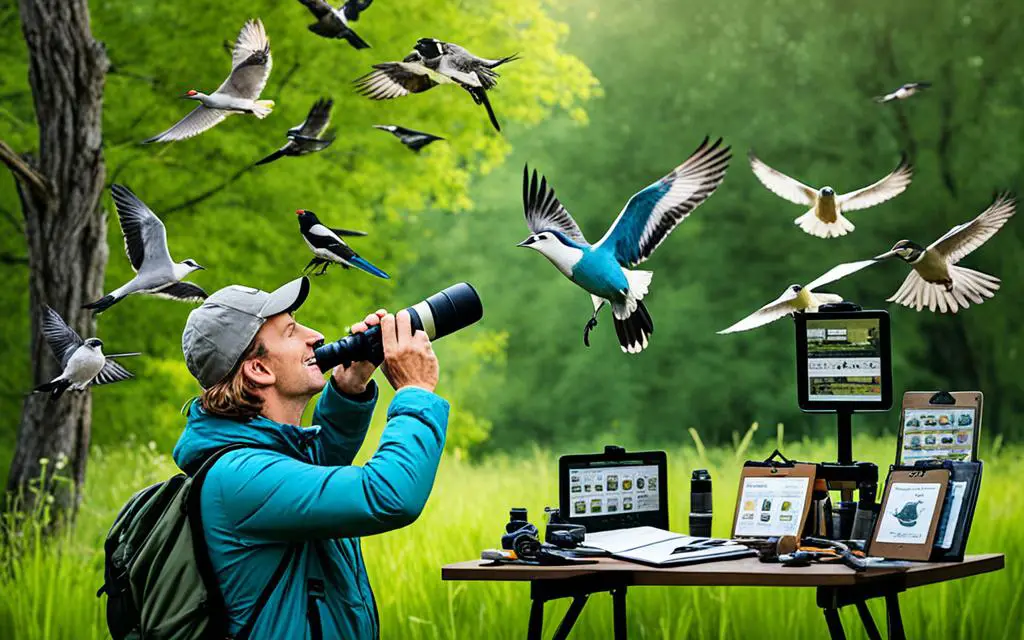
To further enhance your birdwatching abilities, it’s essential to expand your knowledge and skills through various resources and educational materials. Luckily, there are numerous birding resources available that cater to all levels of birdwatchers.
If you want to connect with like-minded individuals and learn from experienced birders, consider joining birding forums and online communities. These platforms provide a space for bird enthusiasts to share their experiences, ask questions, and gain insights from others in the birding community.
Additionally, taking advantage of educational materials can significantly contribute to your growth as a birder. Invest in books, field guides, and online courses that focus on bird identification, behavior, and habitat preferences. These resources can offer valuable information and enhance your understanding of bird species.
Furthermore, participating in citizen science projects, such as bird counts, gives you the opportunity to contribute to bird conservation efforts while honing your birdwatching skills. These projects allow you to collect valuable data that scientists and researchers use to monitor bird populations and implement conservation strategies.
Benefits of Joining Birding Forums and Online Communities
“Birdwatching is not just a solitary activity; it’s also about building connections with fellow bird enthusiasts. Joining birding forums and online communities enables you to be part of a vibrant and supportive community. You can share your sightings, exchange tips, and learn from others’ experiences, ultimately enriching your birdwatching journey.” – [Birding Enthusiast]
The Power of Citizen Science: Bird Counts
“By participating in citizen science projects like bird counts, you actively contribute to bird conservation efforts while expanding your birdwatching skills. These projects provide valuable data that helps researchers monitor bird populations, identify trends, and implement conservation strategies. It’s a win-win situation for both birdwatchers and the birds themselves!” – [Bird Conservation Advocate]
| Resource | Description |
|---|---|
| Books and Field Guides | Comprehensive guides that offer detailed information on bird species identification, behavior, and habitat preferences. They are a valuable resource for both beginners and experienced birdwatchers. |
| Online Courses | Virtual courses and webinars conducted by birding experts and organizations. These courses cover various aspects of birdwatching, including bird identification, birding ethics, and conservation. |
| Websites and Blogs | Online platforms that provide articles, birding news, and tips from seasoned birdwatchers. They often feature photographs and in-depth insights into specific bird species. |
Sources:
- Bird Forum
- All About Birds
- Cornell Lab of Ornithology
- eBird
Enjoy Birdwatching with Family and Kids

Birdwatching is a great activity to enjoy with your family and introduce kids to nature. It provides a wonderful opportunity to bond, explore the outdoors, and develop an appreciation for wildlife. Engaging children in birdwatching activities can spark their curiosity and create lasting memories. Plus, it’s a fantastic way to spend quality time together as a family!
There are many family-friendly birding activities that you can do with kids to make the experience enjoyable and educational:
1. Set up Bird Feeders
Installing bird feeders in your backyard is an excellent way to attract a variety of bird species. Get your kids involved in choosing the right birdseed and placing the feeders in suitable locations. They will love observing the different birds that come to feed and identifying their unique colors and behaviors.
2. Go on Bird Walks
Explore local parks, nature trails, or nearby bird sanctuaries with your kids. Take leisurely walks and keep an eye out for birds perched in trees or soaring overhead. Encourage your little ones to listen for bird calls or try to spot birds in flight. You can even turn it into a fun game, challenging them to identify different species.
3. Use Educational Resources
Utilize educational resources and books specifically designed for kids to teach them about birds and their habitats. There are numerous child-friendly bird identification guides and field books available that use colorful illustrations and easy-to-understand descriptions. These resources can help children learn about different bird species and their unique characteristics.
4. Engage in Citizen Science Projects
Engaging in citizen science projects is an excellent way to blend birdwatching with valuable learning experiences for kids. Many organizations offer programs that allow families to participate in bird counts and contribute to scientific research. These projects not only teach children about bird conservation but also instill a sense of responsibility and involvement in protecting our natural world.
Remember, the key to enjoying birdwatching with kids is to keep it fun, interactive, and age-appropriate. Be patient with their curiosity and encourage them to ask questions. Whether you’re spotting colorful songbirds, observing majestic raptors, or discovering birds’ nests, family birding can create wonderful memories and foster a lifelong love for nature and wildlife in your children.
Now, let’s take a look at an example of a birding activity table you could enjoy with your family:
| Birding Activity | Description |
|---|---|
| Create a Bird Journal | Encourage your kids to keep a journal of their bird sightings. They can draw pictures, write descriptions, or even record the sounds they hear. This activity helps them develop observation skills and a connection to the birds they encounter. |
| Hunt for Bird Nests | Go on a nest-hunting adventure and see if you can find any bird nests in your neighborhood or nearby parks. Teach your kids about the different types of nests birds build and the materials they use. |
| Build a Birdhouse | Engage in a DIY project and construct a birdhouse with your kids. Not only will they enjoy building and decorating the birdhouse, but it will also provide a safe haven for birds to nest in your backyard. |
| Attend Birding Workshops or Events | Look for local birding workshops or events that are family-friendly. These activities often include bird walks led by experts, educational presentations, and hands-on experiences for kids. |
Remember to adapt these activities based on your kids’ interests and abilities. The goal is to have fun, explore nature, and cultivate a love for birdwatching as a family.
Birdwatching Around the World
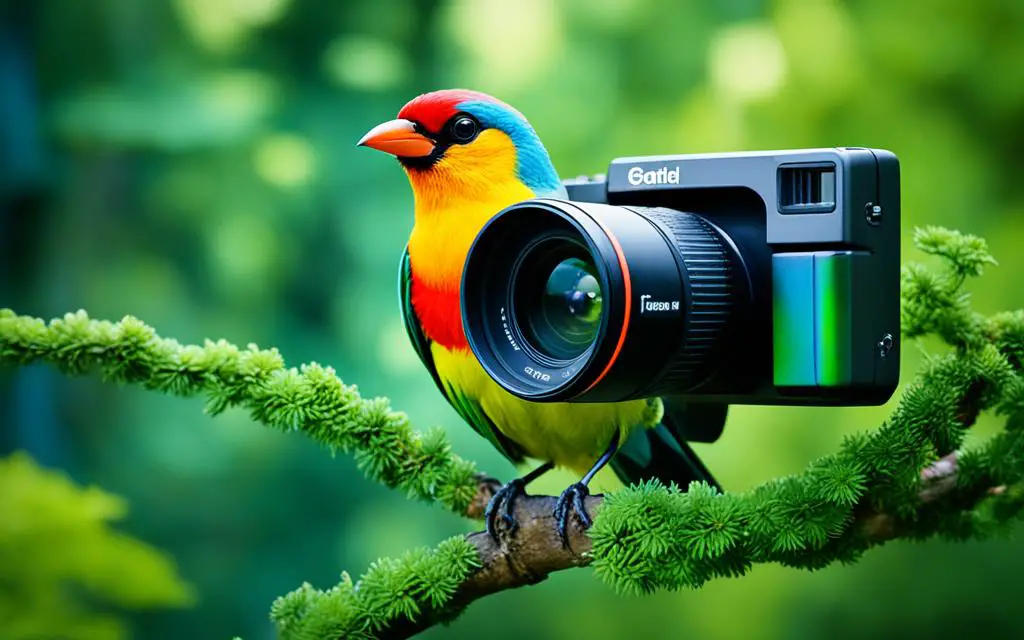
Birdwatching is a global hobby that offers endless opportunities to explore diverse bird species in their natural habitats. Whether you’re a seasoned birder or a beginner, there are countless birding destinations around the world that promise breathtaking encounters with rare species. Embark on international birdwatching adventures and capture the beauty of birds through photography.
When planning your international birding trips, consider destinations known for their rich avian biodiversity. From the lush rainforests of Costa Rica to the vast savannahs of Africa, each region offers unique and exciting birding experiences.
| Destination | Rare Bird Species |
|---|---|
| Australia | Superb Lyrebird, Wedge-tailed Eagle, Gouldian Finch |
| Peru | Andean Cock-of-the-rock, Inca Tern, Humboldt Penguin |
| Kenya | Secretary Bird, Lilac-breasted Roller, African Fish Eagle |
| India | Indian Peafowl, Greater Flamingo, Malabar Trogon |
| South Africa | Blue Crane, Cape Weaver, African Penguin |
During your birdwatching expeditions, don’t forget to bring along your camera to capture stunning bird images. Bird photography allows you to preserve memories of your encounters and share the beauty of birds with others.
Here are some bird photography tips to help you enhance your birdwatching experience:
- Invest in a quality telephoto lens to capture birds from a distance without disturbing them.
- Use a fast shutter speed to freeze the motion of birds in flight or during active moments.
- Experiment with different angles and perspectives to bring out the unique features and behaviors of each bird.
- Pay attention to lighting conditions and aim to shoot during the golden hours of early morning or late afternoon for soft, warm light.
- Practice patience and observe bird behavior to anticipate interesting moments to capture.
Remember, birdwatching is not just about ticking off species on a checklist, but also about immersing yourself in the natural world and appreciating the beauty and diversity of birds. Enjoy the journey and the remarkable experiences that international birdwatching has to offer!
Birdwatching Festivals and Tours
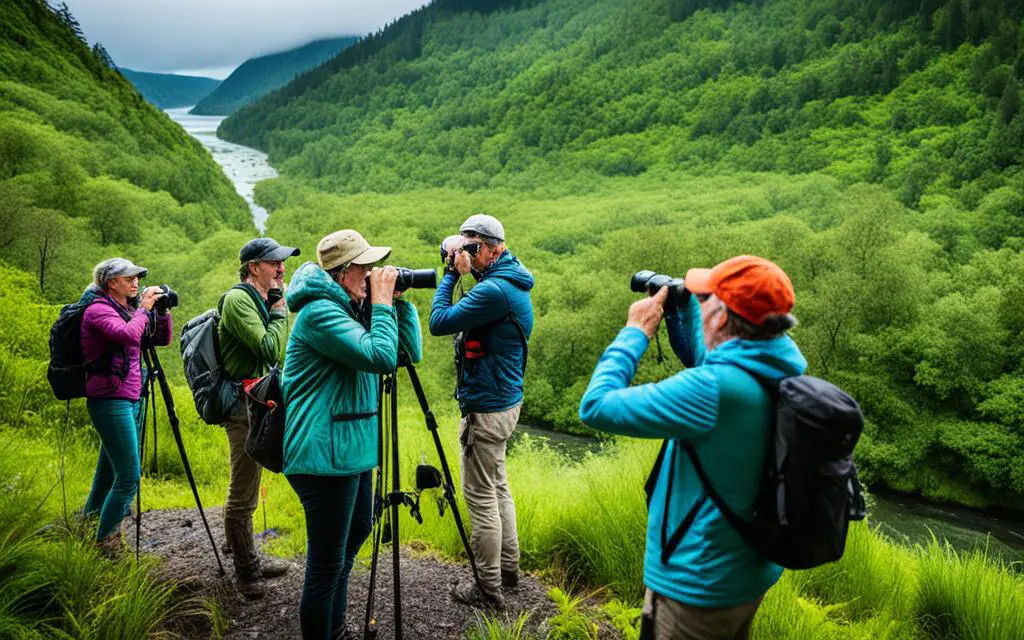
Enhance your birdwatching experience by attending birdwatching festivals and joining guided birding tours. Birdwatching festivals offer a fantastic opportunity to immerse yourself in the world of birds and connect with fellow birdwatchers. These events often feature expert speakers, workshops, and field trips to prime birding locations, where you can learn from experienced birders and discover new species.
Guided birding tours provide an organized and educational way to explore different birding destinations. Whether you are a beginner or an experienced birder, these tours cater to all levels of birdwatchers. Led by knowledgeable guides, you’ll have the chance to observe a wide variety of bird species in their natural habitats while receiving expert insights and guidance along the way.
Benefits of Birdwatching Festivals and Guided Birding Tours
Attending birdwatching festivals and joining guided birding tours offers numerous benefits:
“Birdwatching festivals and guided birding tours provide excellent opportunities to connect with nature, learn from experts, and explore new birding destinations. These experiences are both educational and exciting, allowing birdwatchers of all levels to expand their knowledge and encounter a diverse range of bird species.”
| Benefits | Description |
|---|---|
| Education and Expertise | Learn from experienced birders and expert speakers during workshops and guided tours. |
| Prime Birding Locations | Explore renowned birding destinations chosen for their rich diversity of bird species. |
| New Birding Experiences | Encounter new and rare bird species in different habitats and ecosystems. |
| Networking and Community | Connect with fellow birdwatchers, share experiences, and build a network within the birding community. |
| Guided Assistance | Receive guidance and support from knowledgeable birding guides throughout the tours. |
Whether you’re a beginner looking to kick-start your birding journey or a seasoned birder seeking new challenges, birdwatching festivals and guided birding tours provide incredible opportunities to further immerse yourself in the world of birds.
Immerse yourself in the world of birds by attending birdwatching festivals and joining guided birding tours to enhance your birdwatching experience
Conclusion
Birdwatching is a fascinating and rewarding hobby that allows you to connect with nature and observe the beauty of birds. By following these birdwatching basics, you can start your birding journey and develop your skills as a birder.
Remember to respect birds and their habitats, continue learning, and share your passion for birdwatching with others. Take the time to explore different birding locations, invest in binoculars for a closer look, and connect with local birding groups for guidance and community.
As you embrace early mornings for birdwatching and learn the basics of bird identification, you’ll find yourself immersed in the wonders of the avian world. Practice birdwatching etiquette to minimize disturbance and expand your knowledge through resources and educational materials.
So get out there, explore, and enjoy the wonderful world of birds! Whether you’re birdwatching in your own backyard or traveling to birding destinations around the world, birdwatching will continue to captivate and inspire you. Happy birdwatching!
FAQ
What is birdwatching?
Birdwatching, also known as birding, is a hobby that involves observing and identifying birds in their natural habitats. It is a popular outdoor activity that allows people to connect with nature and appreciate the beauty of birds.
How do I start birdwatching?
To start birdwatching, step outside and observe the birds in your own backyard. Set up bird feeders and a birdbath to attract birds. Get a bird identification guide or a birding app to help you identify the birds you encounter. Consider investing in binoculars for a closer look at birds.
Do I need binoculars for birdwatching?
While not necessary, binoculars greatly enhance the birdwatching experience by allowing you to see birds in greater detail. Look for binoculars in the 0 to 0 range that offer good optics and a lifetime waterproof warranty. Choose binoculars that have appropriate magnification and weight for easy use in the field.
Where can I go birdwatching?
You can go birdwatching in a variety of locations, including local parks, nature reserves, and even urban areas. Different bird species prefer specific habitats, so exploring different environments will allow you to observe a diverse range of birds.
How can I learn to identify birds?
Learning bird identification involves paying attention to field marks such as plumage patterns and beak shape, as well as observing bird behavior and habitat preferences. Using a field guide or birding app can help you narrow down the possibilities and identify different bird species.
What is birdwatching etiquette?
Birdwatching etiquette involves respecting birds and their habitats, minimizing disturbance, and following park rules and regulations. This includes avoiding loud noises, staying on designated trails, and not approaching or disturbing nesting birds.
How can I expand my birdwatching knowledge?
There are various ways to expand your birdwatching knowledge, such as joining local birding groups or birding clubs, participating in citizen science projects, and exploring online resources and educational materials. Connecting with other birdwatchers can provide valuable information and opportunities to learn from experienced birders.
Can I go birdwatching with my family and kids?
Absolutely! Birdwatching is a great activity to enjoy with your family and introduce kids to nature. You can involve children in birding activities, use educational resources specifically designed for kids, and explore family-friendly birding locations. Birdwatching can create lasting memories and foster a love for nature in children.
Where can I go birdwatching around the world?
Birdwatching can be enjoyed around the world, and there are countless destinations known for their diverse bird species. From tropical rainforests and savannas to remote islands, there is a wide range of international birding opportunities. Research and plan trips to specific birding destinations to see rare bird species in their natural habitats.
Are there birdwatching festivals and tours available?
Yes, there are birdwatching festivals and guided birding tours available. Birdwatching festivals often feature expert speakers, workshops, and field trips to prime birding locations. Guided birding tours provide the opportunity to explore new birding destinations and learn from experienced birders. These events and tours cater to birdwatchers of all levels, including beginners.
What are the important birdwatching basics?
Important birdwatching basics include observing birds in your backyard, using a bird identification guide or app, investing in binoculars, exploring different birding locations, connecting with local birding groups, practicing birdwatching etiquette, expanding your knowledge and skills, enjoying birdwatching with family and kids, and exploring birdwatching opportunities around the world.
Source Links
- https://ny.audubon.org/news/bird-watching-101-guide-beginners
- https://www.nps.gov/articles/birding-for-beginners.htm
- https://birda.org/how-to-start-birding-a-helpful-guide-for-birdwatching-beginners/

My name is Shane Warren, the author behind Your Bird Buddy – your ultimate guide to the wonderful world of birds! Unleash your inner avian explorer as we delve into a vibrant library of knowledge dedicated to all things feathered. From learning about diverse bird species from across the globe to understanding their captivating habitats and behaviors, I’m here to fuel your passion for these magnificent creatures. Not only that, but I also provide valuable insights on being a responsible and informed pet bird owner. Join our vibrant community and let’s celebrate the feathered wonders of the world together – one chirp at a time. And be sure to join our Your Bird Buddy Community over on Facebook!

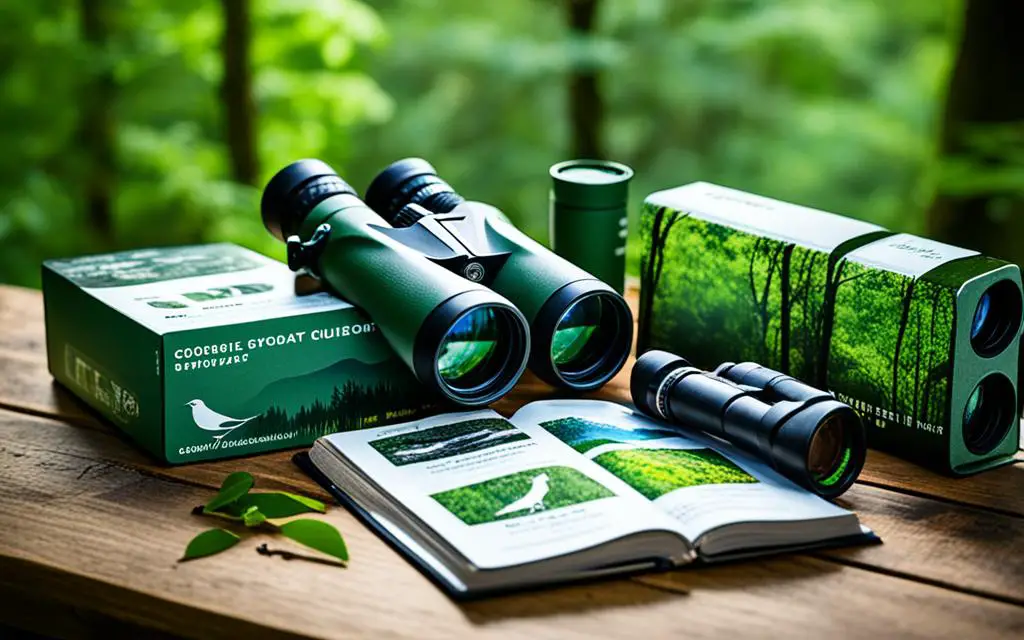
Comments are closed